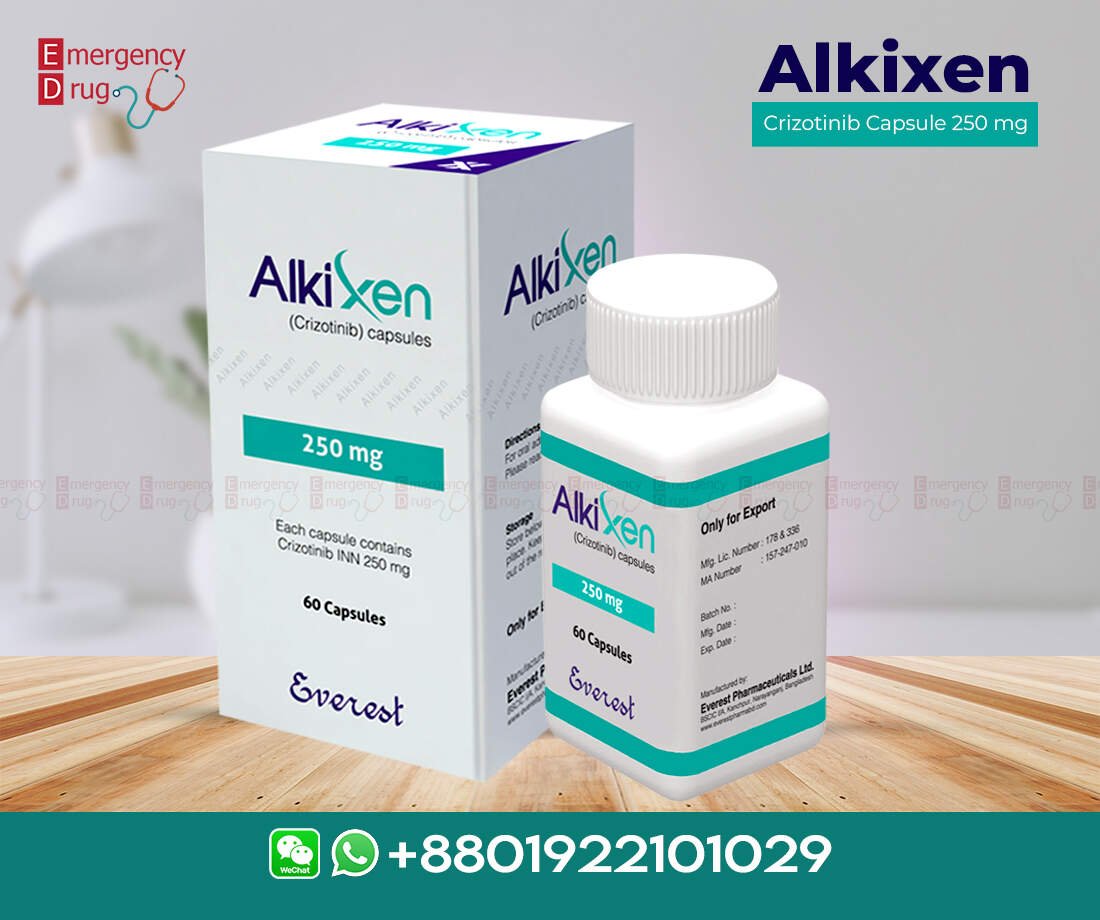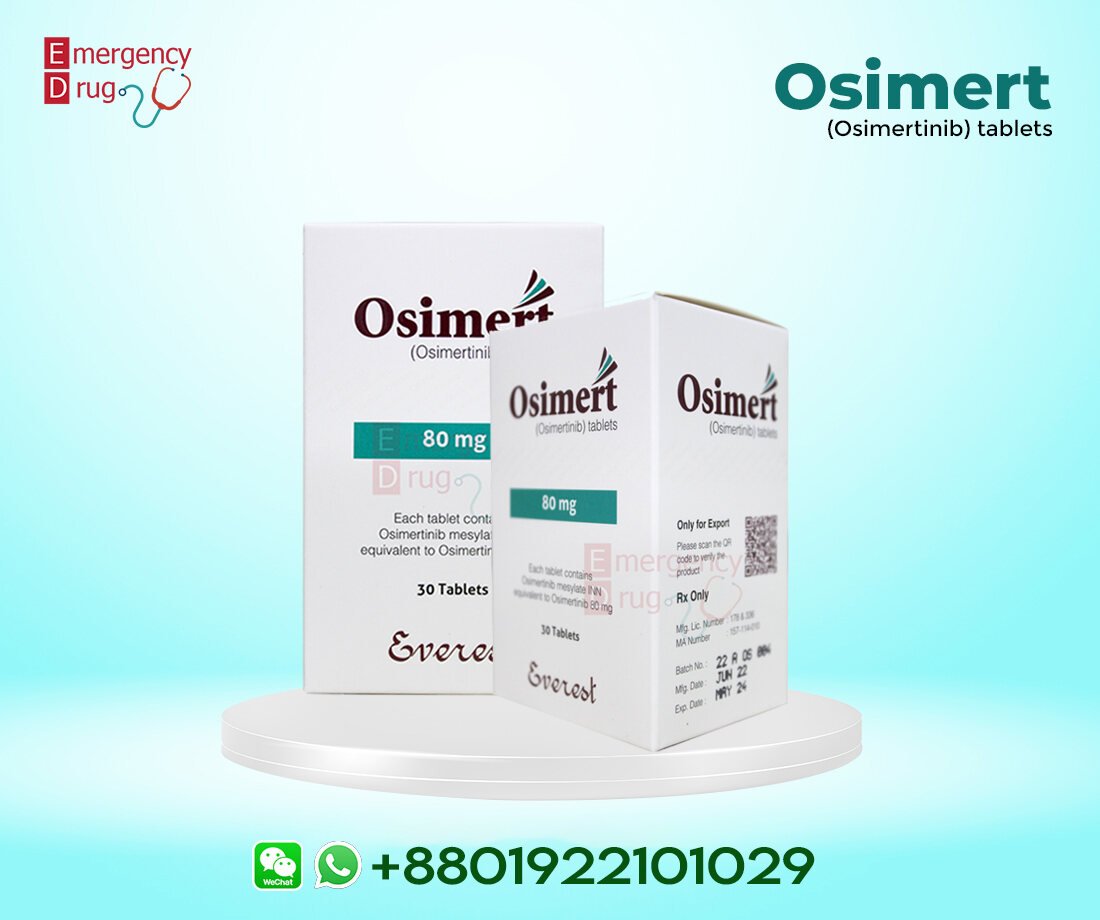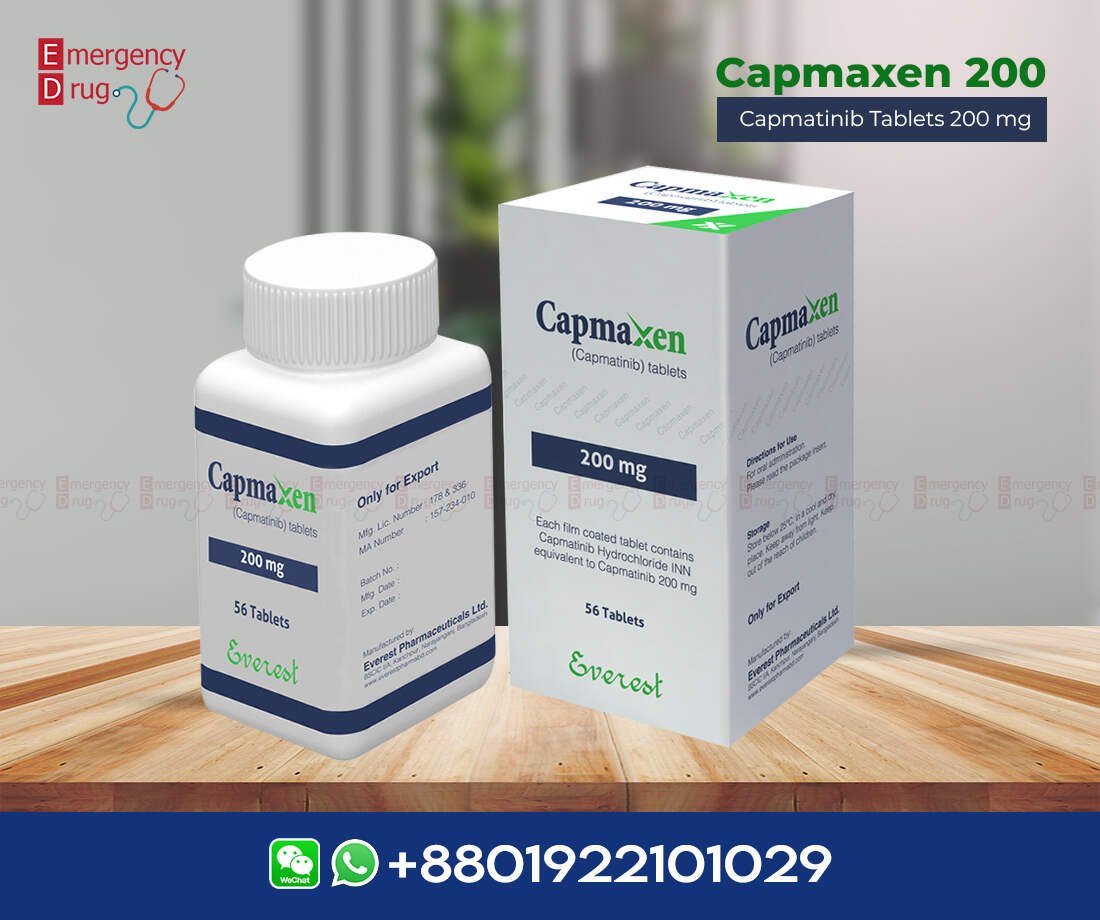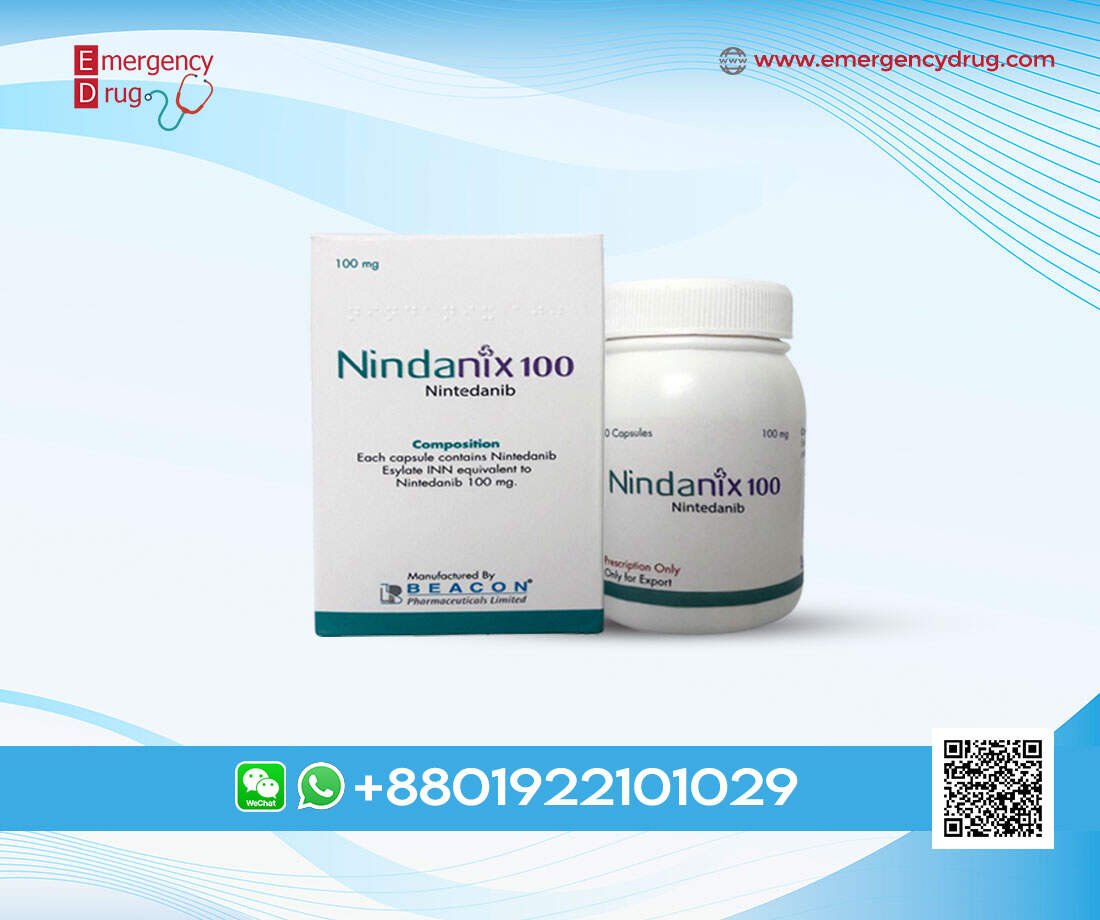Description
Alkixen capsule: Each capsule contains Crizotinib INN 250 mg.
Product Features
| Product Name | : | Alkixen |
| Generic Name | : | Crizotinib |
| Formulation | : | Capsule |
| Available Pack Size | : | 60’s Pot |
| Available Strength | : | 250 mg |
| Registrations | : | Export Only |
Indication of Alkixen
Crizotinib is a kinase inhibitor approved for treating:
- Metastatic non-small cell lung cancer (NSCLC) in patients whose tumors test positive for anaplastic lymphoma kinase (ALK) or ROS1, as detected by an FDA-approved test.
- Relapsed or refractory, systemic anaplastic large cell lymphoma (ALCL) that is ALK-positive in pediatric patients aged 1 year and older, as well as young adults.
Mechanism of Action
Alkixen is a medication that blocks certain proteins in the body called receptor tyrosine kinases, which are involved in cancer growth. It targets proteins like ALK, c-Met, ROS1, and RON. When the ALK gene is altered, it can produce abnormal proteins that promote tumor growth. Alkixen stops the activity of these proteins, slowing down cancer cell growth and survival. Studies have shown that it works by inhibiting ALK, ROS1, and c-Met in laboratory tests and has been effective in reducing tumor growth in mice with specific gene mutations.
Pharmacokinetic Properties
After taking Alkixen 250 mg twice daily, it reaches a steady level in the body within about 15 days and stays stable afterward. The amount of the drug in the body increases about 4.8 times compared to when it’s taken just once. As the dose increases from 200 mg to 300 mg twice daily, the levels of the drug in the body increase more than expected, ranging from 0.8 to 1.2 times the recommended dosage.
Absorption & Elimination
After taking a single dose of Crizotinib, it typically takes 4 to 6 hours to reach peak concentration in the bloodstream. On average, 43% of the drug taken is absorbed into the body, with a range of absorption between 32% and 66%.
After single doses of Crizotinib in patients, the average time it takes for the drug’s plasma concentration to decrease by half is approximately 42 hours. The apparent clearance (CL/F) of Crizotinib is lower at steady-state (60 L/h) when taken at 250 mg twice daily compared to a single crizotinib 250 mg oral dose (100 L/h).
Dosage and Administration
For ALK- or ROS1-positive metastatic non-small cell lung cancer, the recommended dosage of Crizotinib is 250 mg taken orally twice daily, with or without food, until disease progression or intolerance occurs.
For patients with ALCL receiving Crizotinib, use standard antiemetic and antidiarrheal medications to manage gastrointestinal side effects. Administer antiemetics before and during Crizotinib treatment to prevent nausea and vomiting. Consider providing intravenous or oral hydration for patients prone to dehydration, and replenish electrolytes as needed based on clinical assessment.
Use in specific populations
Pregnancy: There is no data on Crizotinib use during pregnancy.
Lactation: There’s no information on Crizotinib presence in breast milk or its effects on the breastfed child.
Females and Males of Reproductive Potential
- Pregnancy Testing: Verify pregnancy status before starting Alkixen.
- Contraception: Alkixen can harm a fetus, so females should use effective contraception during treatment and for 45 days after the last dose. Male partners should use condoms during treatment and for 90 days after the last dose.
- Infertility: Crizotinib (Alkixen) may reduce fertility based on animal studies.
Pediatric Use: Alkixen is safe and effective for pediatric patients aged 12 months and older with certain types of cancer.
Geriatric Use: No notable differences in safety or effectiveness were observed between older and younger patients in studies.
Hepatic Impairment: Reduce Crizotinib dosage in patients with moderate or severe liver problems.
Renal Impairment: No dosage adjustment is necessary for patients with mild to moderate kidney impairment.
Warnings and Precautions
Hepatotoxicity: Monitor liver function tests (ALT, AST, total bilirubin) every 2 weeks for the first 2 months, then monthly or as needed. Increase monitoring if liver enzyme levels rise. Consider withholding, reducing dose, or discontinuing Crizotinib if hepatotoxicity occurs.
Interstitial Lung Disease/Pneumonitis: Watch for pulmonary symptoms indicating ILD/pneumonitis. Exclude other causes. Permanently stop Crizotinib if drug-related ILD/pneumonitis is diagnosed.
QT Interval Prolongation: Avoid Crizotinib in patients with congenital long QT syndrome. Monitor ECGs and electrolytes in those with heart failure, bradyarrhythmia, or on QT-prolonging medications. Adjust Crizotinib dosing accordingly.
Bradycardia: Be cautious when using Crizotinib with other drugs causing bradycardia. Monitor heart rate and blood pressure regularly. Reassess medication combinations if bradycardia occurs.
Severe Visual Loss: If patients experience visual symptoms or loss, weigh risks versus benefits before resuming Crizotinib. The decision should be made carefully.
Gastrointestinal Toxicity in Patients with ALCL: Provide standard antiemetic and antidiarrheal treatment for gastrointestinal side effects in patients with ALCL.
Embryo-Fetal Toxicity: Crizotinib can harm a fetus if taken during pregnancy due to its mechanism of action. Therefore, it should be avoided in pregnant women.
Countries where our service provided
Delivering worldwide including United State (USA), United Kingdom (UK), Saudi Arabia, Dubai, Kuwait, Qatar, Philippines, Nepal, Malaysia, Indonesia, Thailand, Poland, Peru, South Korea, New Zealand, Netherlands, Georgia, France, Egypt, Australia, Germany, Canada, Uzbekistan, Lebanon, Mexico, Singapore, Vietnam, etc.
For more Medicine, Visit our Shop








Reviews
There are no reviews yet.